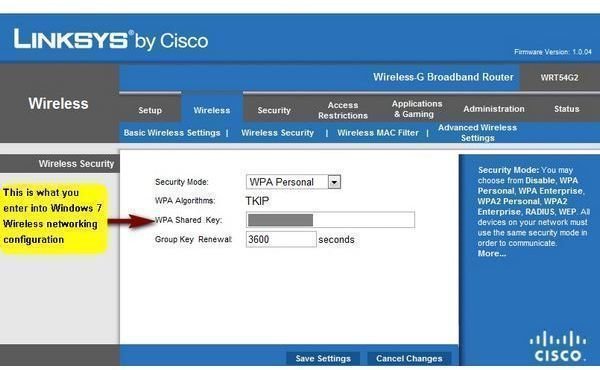How To Configure Wireless a Router for Windows 7
Configuration
It is possible to just plug in a wireless router with Windows 7 and have Microsoft networking setup automatically. However, that won’t always work, and more importantly, it can be a bad idea from a networking security standpoint. There are also plenty of Windows 7 wireless network problems that can be solved by changing some simple settings. Configuring a wireless router for Windows 7 is easy and straightforward if you just follow some simple steps. A wireless router that you have configured yourself also makes it easier to troubleshoot wireless networking problems in Windows.
All wireless routers ship with a default administrator account username and password configured, as well as a default network name setup. It is important to change these settings right away because they are widely known in the networking community. Leaving the defaults setup on your wireless routers is like inviting a hacker to use your wireless network.
Check the manual to find out how to first log into the wireless router. Most routers can be accessed by typing in an IP address such as 172.0.0.1 or 192.168.1.1 into any web browser. The first connection to a wireless router for setup may need to be made via a wired connection for security and configuration purposes. There will also be a default username and password used to configure the wireless router. Common examples include:
- ‘administrator’ with a blank password
- ‘admin’ with the password ‘admin’
- ‘default’ with the password ‘default’
If none of these works, check the manual or manufacturer support page for the correct default password for your router.
Note: If your wireless router has been configured before and you do not have the username and password, most routers have a tiny button inside of a small hole that requires a paper clip or pen tip to push. This button will reset your wireless router to the factory defaults, including the default username and password.
Once you have connected to your wireless router, it is time to configure it to work with Windows 7. For that, you will need to know whether you want DHCP to be handled by your wireless router, and also the addresses of any WINS or DNS servers that you want to use on your own network. (If you are using DNS servers from the Internet, there is no need to enter them unless your ISP instructs you to do so.)
Configuring Wireless Router for Windows 7
Windows 7 works with a wide variety of networking settings, so it is not necessary to configure most advanced settings. However, changing the default username and password as well as the default wireless networking name are important before connecting any of your personal computers to the wireless network for all to see.
First, access the Security or Administration configuration screens to change the password and username required to access the router and its configuration. This will prevent someone else from logging into to your wireless router and changing settings without your permission.
Next, go to the wireless configuration settings and choose a SSID or wireless network name. This is the name that will appear in Windows 7 networking when you are choosing which wireless network to connect to.
If your router supports DHCP and you intend to use it to make your home networking easier, configure that as well. Use an IP address range compatible with your current networking address scheme, or if you don’t have one, use something like 192.168.1.10 to 192.168.1.50. Make the range larger or smaller depending upon how many devices you have connecting to the network. Be sure to create a range that has more addresses than you have devices as wireless network connectivity drops or issues might cause an address to stay “in use” on the router even though the device no longer thinks that has that address. Having a buffer of a few addresses ensures that such devices will be able to connect again later.
Finally, secure your network using a wireless network security protocol. You may have read that such security can be easily broken, and that is true, however, the number of people who can do such a thing (and might actually try it on your network) is not as large as you might think. Implementing basic wireless security protocols is like locking your doors. A professional burglar can still get into your home by picking the lock, but someone just walking by trying doorknobs will not.
Windows 7 supports all current wireless security protocols, but most users report the least amount of trouble using WPA Personal. If you cannot get WPA2 to work with your wireless network, try using WPA and see if that helps.
Increase Wireless Configuration Speed
There are many programs and articles out there purporting to be able to speed up your wireless connection by tweaking settings in your wireless router configuration. While some of these changes may work, they may not work in all scenarios, like when all computers are not close to the router and within line of sight. More importantly, these settings do nothing to increase the speed of your Internet connection which is controlled by your ISP. If you are trying to make downloading from the Internet faster, changing your configuration will not improve your network speed. The only reason to even look at these types of configuration options is if you are trying to make the connection faster between YOUR computers on the same wireless network.
